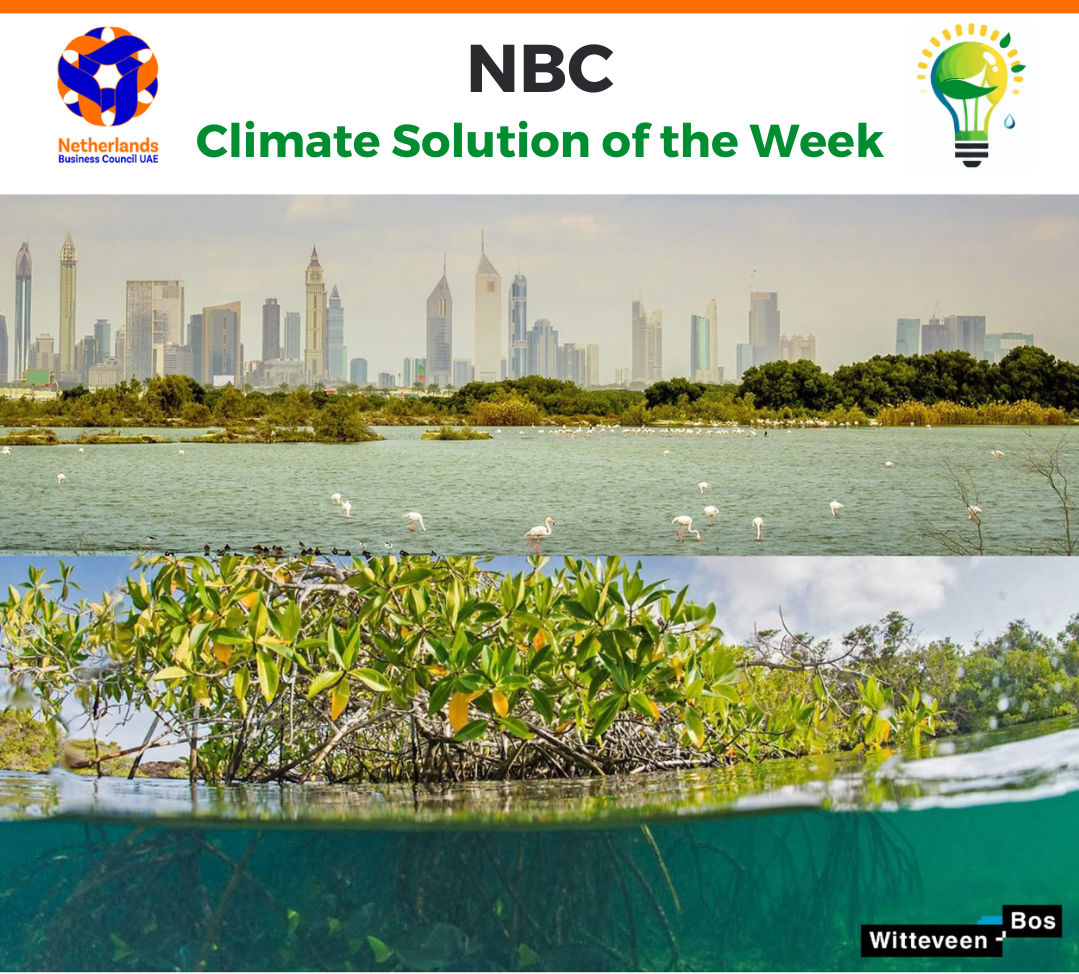Climate Solution of the Week - WITTEVEEN+BOS

This week’s climate solution from Witteveen+Bos is to create sustainable eco-tourism projects along the natural coastal areas in the UAE with a focus on mangrove ecosystems which can also act as carbon sinks.
Did you know that mangroves sequester more CO2 compared with other forests? Current studies suggest that mangroves and coastal wetlands annually sequester carbon at a rate ten times greater than mature tropical forests. They also store three to five times more carbon per equivalent area than tropical forests. (Source NOAA)
W+B uses Building with Nature (BwN), an interdisciplinary approach that employs context-specific, nature-based solutions for water-sensitive environments. As an approach, BwN emphasizes the role of nature and uses the processes of nature in sustainable development in water-sensitive areas. The following seven SDGs are linked to BwN: #SDG6 clean water, #SDG9 industry, innovation, and infrastructure, #SDG11 sustainable cities and communities, #SDG12 responsible consumption and production, #SDG13 climate action, #SDG14 life below water, and #SDG1 ending extreme poverty.
An example of a proven successful project is the Ecological Restoration of the coast in Demak, Indonesia, done in cooperation with RVO, The Netherlands Enterprise Agency, and other parties. The project restored 119 ha of lost mangrove forests, providing coastal security and supporting the sustainable revitalization of 464 ha of aquaculture ponds along a 20km shoreline. Last year, this project was awarded the UN World Restoration Flagship Award which was estimated to benefit at least 10,000 people. Witteveen+Bos has been working on numerous other projects relating to mangrove restoration for over 40 years.
Witteveen+Bos is part of the EcoShape consortium, a coordinating agency for the BwN community, located in the Netherlands. Based on twelve years of experience in pilot projects worldwide, the consortium has derived six enablers that are crucial in the creation, implementation, and upscaling of BwN solutions which can be applied to any other water-related infrastructure. The consortium has also published various guidelines and a book on using Building with Nature as the core philosophy in projects with challenges relating to environmental engineering.
When compared to traditional infrastructure, BwN solutions are seen to be more cost-effective, help cope with climate change-related risks, and offer multiple co-benefits. For example, mangrove reforestation projects across coastlines will help in coastal protection, erosion, abrasion control, and carbon sequestration along with providing livelihood opportunities for local people. Considering the nature of some of these benefits which are linked to ecosystem services and community engagement, it is challenging to quantify all of them. In the ecological restoration project in Demak, it was estimated that by establishing a mangrove and fisheries park, the value of carbon sequestration would go up from approximately 50 USD/ha in 2015 to 180 USD/ha in 2050.
Witteveen+Bos is looking forward to working with interested parties to realize BwN solutions in the region and share lessons learned from previous projects. As engineers, they have the knowledge and expertise to design, construct/rehabilitate, and maintain BwN solutions.
To learn more about their Building with Nature(BwN) solutions visit: www.witteveenbos.com/areas-of-expertise/deltas-coasts-and-rivers/

